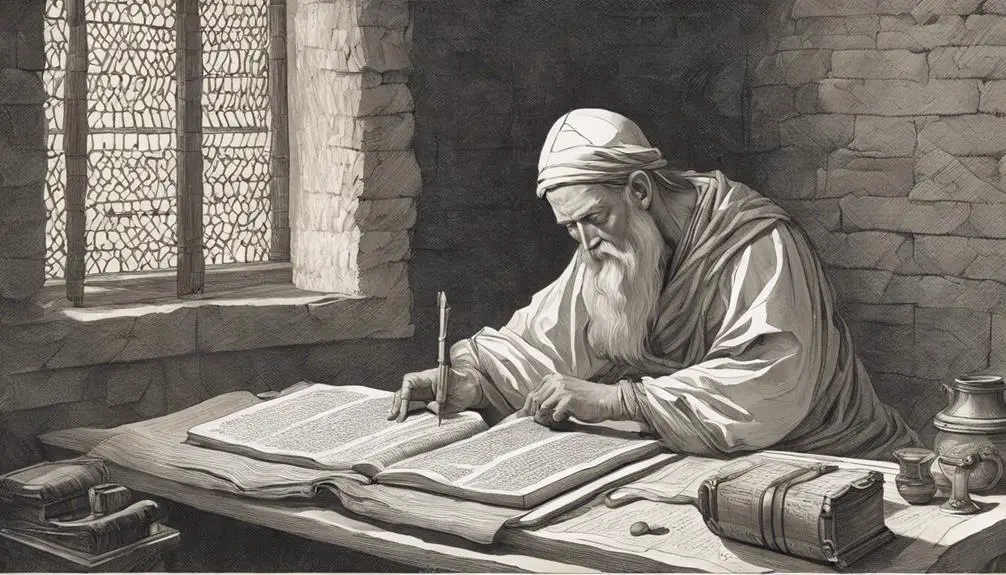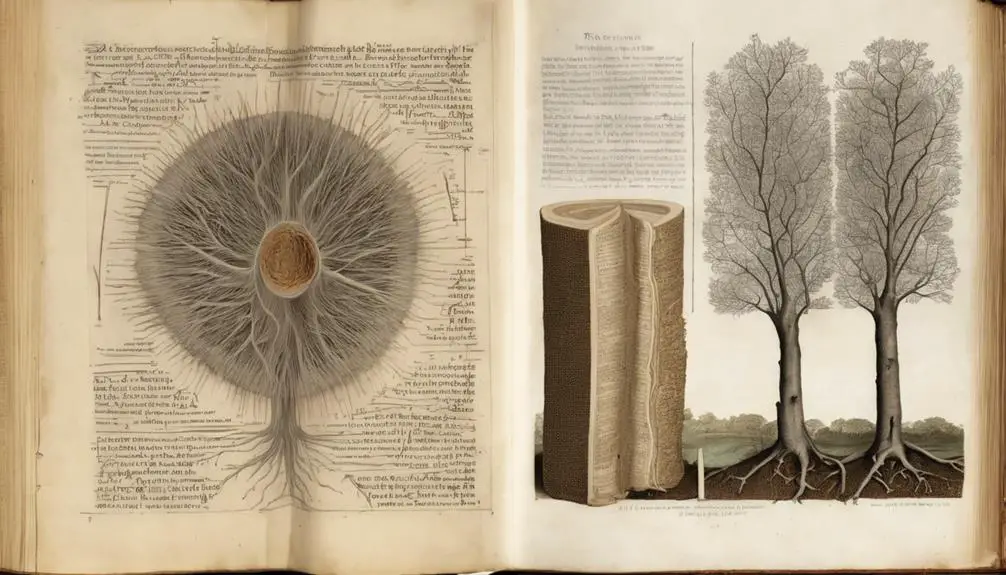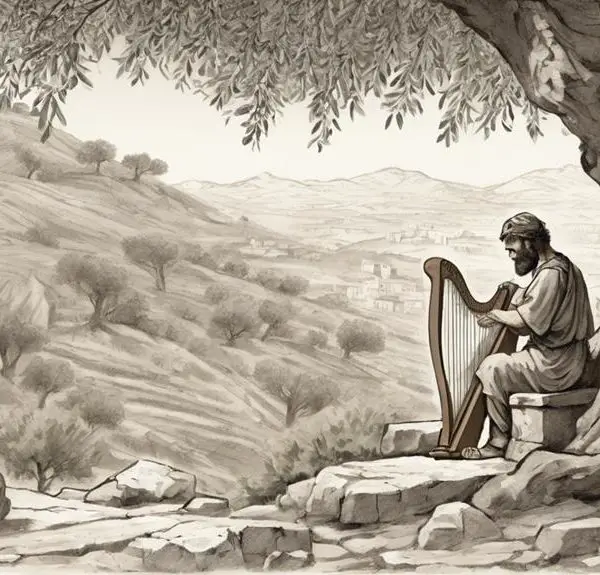Get a glimpse into the intriguing reasons behind the Bible's remarkably thin pages; it's a tale steeped in practicality, history, and tradition.

Why Are the Pages in the Bible so Thin
Just by chance, have you ever wondered why the pages in your Bible are so thin, almost delicate to the touch?
It's not a random decision made by publishers, but a calculated one with reasoning steeped in practicality, history, and even a bit of tradition.
Despite this, the answer isn't as straightforward as you might think.
The mystery behind the Bible's remarkably thin pages is intriguing, and as you explore this further, you'll uncover fascinating insights that may change the way you perceive this sacred book.
Key Takeaways
- Thin Bible pages accommodate extensive text in a compact, portable format due to advancements in paper technology.
- Balancing thinness and strength in Bible pages is crucial for durability and frequent usage in various settings.
- High-quality, ultra-thin pages enhance readability, aesthetics, and the spiritual experience of reading the Bible.
- Innovations in Bible page production, like chemical treatments and fillers, prevent text show-through and increase page opacity.
Understanding the History of Bible Production

To fully grasp why Bible pages are so thin, you need to delve into the rich history of Bible production. It's a story steeped in the artistry of sacred typography, the struggle for precise translations, and the need for accessibility.
The Bible, as you know it, has undergone countless translations. Each version was carefully crafted, painstakingly reviewed, and meticulously corrected to ensure the faithful transmission of the divine word. This process, critical to the integrity of the Bible, also necessitated a printing approach that could hold the dense, complex text – hence the birth of sacred typography.
Sacred typography is a specialized field, combining art and science to create visually appealing, easy-to-read print. It's not just about fitting the words on the page; it's about creating a layout that aids comprehension and enhances reverence.
Considering the sheer volume of text in the Bible, it was critical to find a way to accommodate it all without creating a book too cumbersome to carry. The thinness of Bible pages became a solution, enabling the inclusion of vast amounts of text in a manageable, portable format. Now, you can hold centuries of wisdom, history, and spiritual guidance in your hands.
The Process Behind Ultra-Thin Bible Pages

You might often wonder how these ultra-thin Bible pages are made, a process that involves a fascinating blend of traditional craftsmanship and modern technology. The production of such paper starts with pulp, which is spread into sheets and then compressed to reduce thickness.
The key to the process is a delicate balance between thinness and strength, while maintaining ink absorption and page transparency. The paper must be thin enough to allow for hundreds of pages in a single book, yet sturdy enough to withstand regular use. It also needs to absorb ink without it bleeding through to the other side.
To achieve this, the paper is treated with specific chemicals to increase its ink absorption capabilities. Page transparency is another crucial factor. You don't want to see the text on the other side of the page when you're reading. To prevent this, manufacturers use a high degree of fillers and brightening agents that increase opacity.
Practical Reasons for Bible's Thin Pages

Understanding this intricate process raises the question: why are Bible pages so thin in the first place? The answer lies primarily in practicality, deeply intertwined with paper technology and religious tradition.
Bibles, especially study versions, contain vast amounts of text. You've got the Old Testament, the New Testament, and often various study aids. To incorporate all this information into a single volume, paper technology had to evolve. The use of ultra-thin paper allowed for a comprehensive Bible that's still portable. It's a practical solution to the challenge of fitting a large amount of text into a book that won't break your back or the bookshelf.
Another layer to this practicality is rooted in religious tradition. The Bible isn't just any book—it's a sacred text. For many, carrying a Bible is a significant part of their religious practice. Making the Bible lighter and more portable facilitates this tradition.
The Role of Paper Quality in Bibles

Delving into the quality of paper used in Bibles, it's crucial to note that it's not just about thinness, but also about durability, readability, and feel. You may wonder why these elements are essential. Well, the Bible is a book that's often passed down through generations, so paper durability becomes a vital factor. Inferior paper quality wouldn't stand the test of time, causing the precious scriptures to fade or pages to tear.
The Bible's aesthetics are also influenced significantly by the paper quality. The thin pages, apart from reducing the overall size of the book, contribute to a sense of reverence and delicacy. They create an ethereal feel, enhancing the spiritual experience for many.
Meanwhile, readability plays an equally important role. The type of paper shouldn't cause strain to the reader's eyes. The thin pages of Bibles are typically made from high-quality, opaque paper that minimizes show-through from the other side. This ensures the text is clear and legible, even with the thinness of the pages.
How Thin Pages Impact Bible Usage

Let's now consider how the thinness of pages directly influences the use of Bibles in various contexts. The thin pages significantly contribute to the overall page durability. Despite their seemingly delicate composition, they're surprisingly resilient. This durability allows for frequent use and handling in various settings, from Sunday school to rigorous theological study. It's this endurance that has made thin pages a hallmark of Bibles over centuries.
Furthermore, the thinness of the pages impacts your reading comfort. You'll find that the lightweight nature of these pages makes the Bible easier to hold for extended periods, enhancing your reading experience. The thin pages also allow for a compact design, making it convenient for you to carry your Bible wherever you go.
However, it's worth noting that thin pages may pose challenges too. For instance, you might've trouble turning pages and the ink can sometimes bleed through. But these are minor inconveniences when you consider the benefits: a durable, portable Bible that's comfortable to read. This balance between page durability and reading comfort is why thin pages are a staple in Bible production.
Frequently Asked Questions
What Type of Ink Is Used to Prevent Bleed-Through on Bible Pages?
You're likely dealing with a specially formulated ink, designed to prevent bleed-through on thin bible pages.
The ink production process ensures the ink is of a specific consistency and durability.
After ink durability analysis, it's applied in a manner that stays on the surface of the paper, rather than soaking in.
This prevents bleed-through, ensuring the words remain clear and legible for years of use.
How Do Manufacturers Ensure the Pages Do Not Tear Easily Despite Being Thin?
Manufacturers ensure that thin pages don't tear easily by focusing on paper durability during page production. They use high-quality, long-fiber paper that's tightly woven for strength.
It's also treated with a special coating to prevent tearing and ink bleed-through. You'll find this process not just in Bible production, but in any instance where durable, thin pages are required.
It's all about balance, creating pages that are both thin and strong.
Are There Any Environmental Concerns Related to the Production of Thin Bible Pages?
Yes, there are environmental concerns related to the production of thin Bible pages. The main concern is the deforestation impact. Trees are cut down to make the paper, which leads to habitat loss and biodiversity reduction.
However, many publishers strive for sustainable production. They use recycled materials or source from sustainably managed forests. They're also exploring alternative materials to reduce the environmental footprint.
How Do the Thin Pages Affect the Overall Weight and Portability of the Bible?
The thinness of Bible pages directly influences its weight and portability. You'll find it's lighter and easier to carry, which makes it ideal for travel.
However, there's a trade-off. Page durability can be compromised, making them prone to tears and wear. Text legibility might be affected too, as thin pages can lead to 'show-through' of text from the other side.
Are There Any Alternatives to Paper Used for Bible Pages in Some Cultures or Countries?
Yes, there are alternatives to paper used for Bible pages in different cultures or countries. This involves variations in page durability practices and cultural adaptations.
For instance, in humid regions, synthetic materials may be used to prevent damage from moisture. In other cultures, thicker, cloth-like materials may be preferred for their tactile quality.
The choices made often balance practical considerations with cultural preferences and religious significance.
Conclusion
So, now you know why Bible pages are so thin. It's a blend of historical practices, practical considerations, and the need for high-quality paper.
These ultra-thin pages allow for easy transportation, durability, and the inclusion of a vast amount of text. Though they may seem fragile, they're part of a tradition that ensures the Bible remains a widely accessible, enduring text.
The thinness of these pages, quite simply, impacts how we use and understand the Bible today.



Sign up